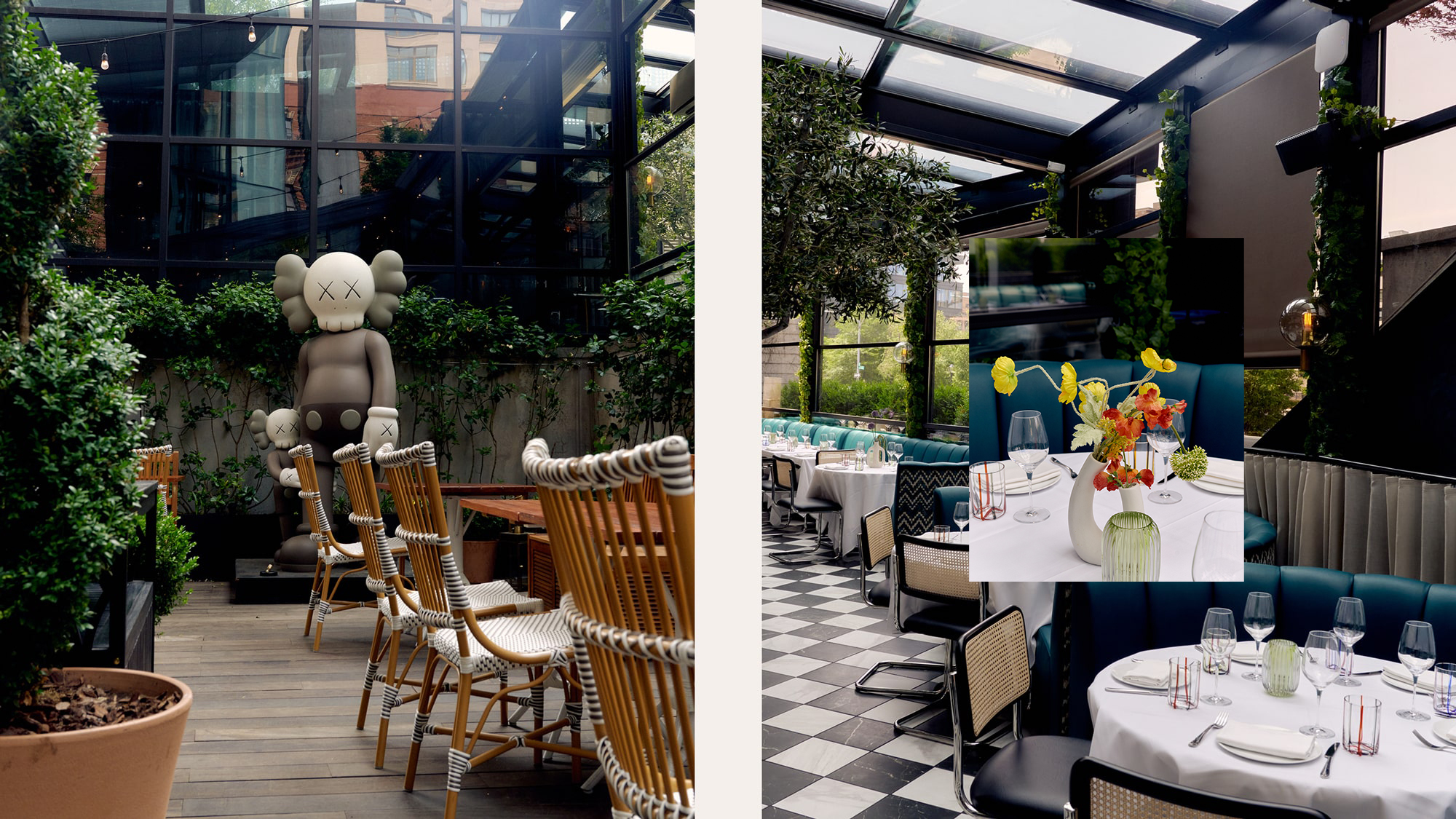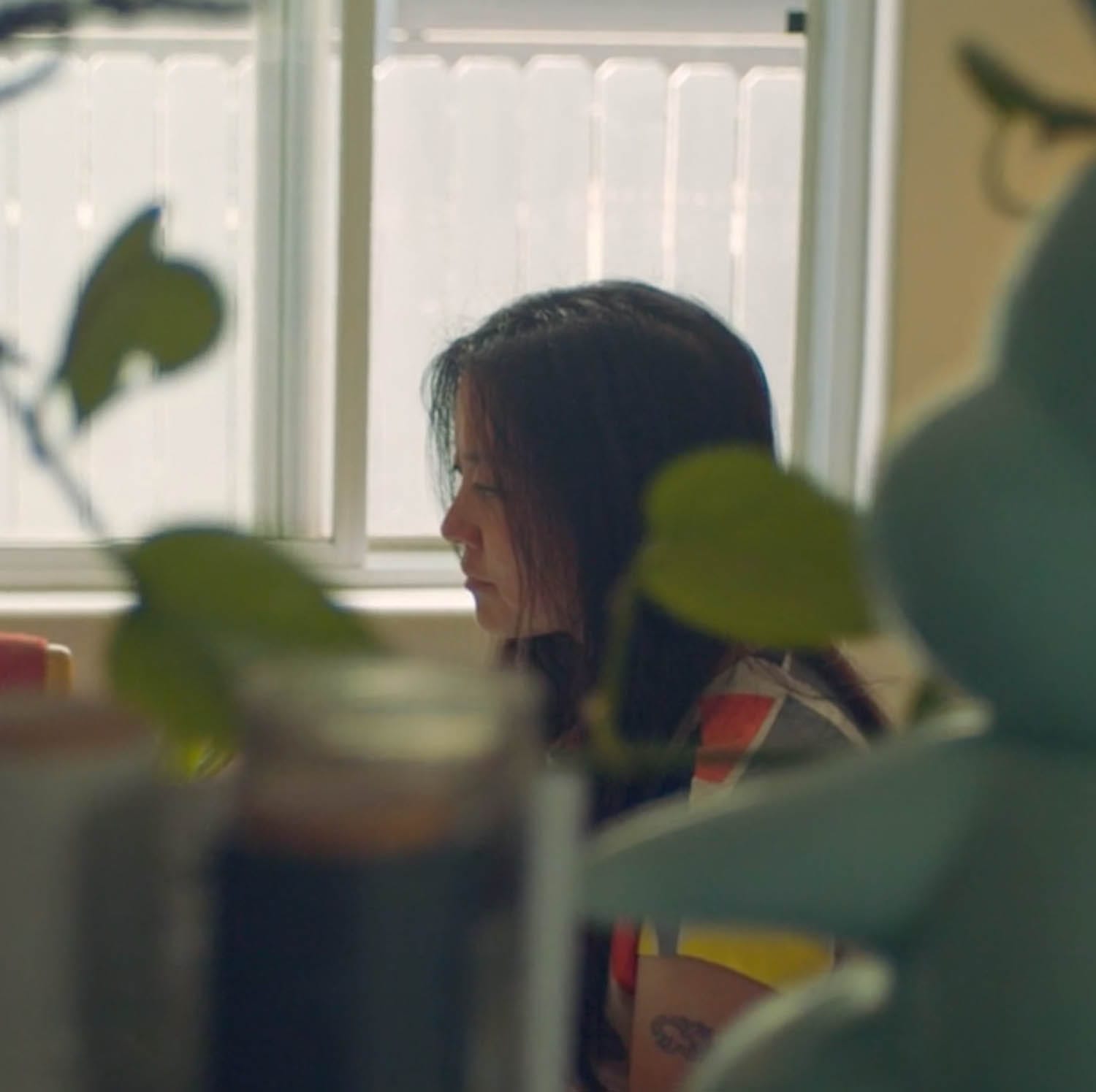Years ago, when Melissa Bowers was a fledgling interior designer in New York City, she was taken on a date to see the New York Philharmonic. “I think his parents had season tickets,” she says. “But it was the best date ever. It felt like I had arrived in New York.” In 2020, when she was working on the interior design for Sona (Prianka Chopra Jonas’ Indian restaurant in Manhattan), the feeling from that date—the excitement, the arrival—guided her inspiration for the space, at least partially.
“Hospitality transcends the design and beauty of the space itself. For me, it’s about people’s reaction…I hope people have their best date at Sona, or their best birthday, or their best meal.” The custom arched mirrors adorning the walls there are inspired by the iconic archways that create the grand entrance to Lincoln Center. It’s no surprise that Melissa’s work resonates with people. Her portfolio includes some of the most coveted restaurants in New York—Saint Theo’s, American Bar, and Holiday Bar to name a few— as well as major residential projects, including Mona Beach, a 35,000 sq ft private home in Puerto Rico. Last month, she carved out some time to take us along for a day in her life, popping in and out of her Chelsea studio, NeueHouse, and a few spaces she’s designed in the city.
NeueJournal:
I imagine that for an interior designer, an empty space or an amount of square footage is akin to a writer or visual artist’s “blank page.” I’m curious about how you begin. What are the stages to your process?
I always begin my projects by meeting the client on site and discussing their dreams and vision. I have to admit that while I am listening to the client, images already start coming to my head— I’m not sure how to explain it, but I almost immediately know what the space needs to become, how to elevate it and how to create something special for someone else. It’s like I have my own Spiderman’s E.D.I.T.H glasses ha! That is my superpower. I see each new project as an invitation—to a fascinating and unique journey where textures, patterns and colors are the protagonists, and the space is the stage where things come to life.

You’ve created a niche in hotel and restaurant design, but your career began in fashion, How did that transition come about?
In a very natural and organic way. While I was studying for a degree in marketing I started doing some works in the fashion industry as a visual merchandiser and stylist. My role was to help with the concept creation of some fashion stores so I started collaborating very closely with designers and architects. I became fascinated by spaces and kept getting more and more interested in interior design. One day a couple of friends asked me to design their new restaurant and store, and that was the turning point in my career. I then met Bill Sofield and he became my mentor and the person who really opened me up to work on retail, residential, hotels and gyms professionally.
The story really speaks to the effect of being a part of a wide creative community.Yes – I definitely gravitate towards creatives in many disciplines, and I think we’re all naturally drawn to communities of like-minded souls. Some of those relationships can end up being hugely important, sometimes in the ways you’d least expect.

What attracted you to hospitality?
Hospitality transcends the design and beauty of the space itself— for me, it’s about the thrill that comes with people’s reaction to the space. My mother taught me that, it is about making people happy. My mother and my grandmother were natural entertainers so a significant part of my upbringing involved setting up amazing tables for endless lunches and dinners with my parents’ friends. These were like small interior projects: fabrics, antiques, flower arrangements, trays, matching cutlery, and thousands of small details organized as a game, but that sparked my passion.
What are the differences when designing a commercial space versus residential?
It’s a different way to apply the psychology of the space. What it works for a group does not always works for an intimate room—one is intimate and the other is about creating collective intimacy.

At your studio you showed us a spreadsheet that catalogued the entire art collection of a single client, with hundreds of pieces. Is art curation and selection typical to your process?
I am a nerd when it comes to art. I refer to it as “the layer,” and it’s always part of the recipe. I am lucky to have amazing clients who happen to share the same feeling when it comes to art—which is quite dangerous and incredibly exciting at the same time! I can spend countless hours looking for the right art pieces for my project.
Speaking of art—thanks to the internet, we have access to a bottomless well of visual reference. How do you feel about apps like Pinterest?
Like everything in life, it is about balance and management. Pinterest is a great tool for a lot of people, however, to me, unless you know how to navigate it properly it is easy to ended up going down the rabbit hole. The way you search is by key words and not so much by knowledge of what you’re looking for. Therefore, the information and images you find are going to be as useful in selecting what’s right or appropriate for each particular case. Without history, context and background the discovery is pure randomness.

What’s inspiring you right now?
What has always inspired me: nature and history. History gives me the context and confidence to appreciate, analyze, and play with trends and styles. Nature is an endless source of inspiration that never fails to reveal new wonders every day.
How would you describe your own personal aesthetic?
Personal! My personal aesthetic is a small collection of beautiful and functional pieces that bring a smile to my face; an oil painting of a cat, that my friend Charles Bitton painted, Chareau fan table that I found in Paris, a large travertine coffee table that I bought in LA at the rose bowl in the late 90’s – the pores are exposed and I love it. A collection of things along the way that are beautiful in their own right and spark the best memories.
What’s the most challenging part of your job?
Time and time management. There’s an instant expectation for things to happen fast, and designing something custom requires long lead times. It can be challenging to convey that message — patience as a virtue does not exist in the hospitality world. But that’s where vintage comes to the rescue!

What’s part of your job that you enjoy the most?
Concept and collaboration, and the excitement and craziness of the execution. It is relatively easy to produce a design concept; the genius comes when you have to execute the vision to perfection. The hustle, the haggling, the problems, the unexpected findings, the thrills. As designers, our resources are our livelihood, they make it happen.
Outside of being a designer, what are your favorite ways to spend time?
Being with family and friends and my daily exercise. I love a long stroll through New York and a coffee after church. Quiet time is precious in a city like New York, and many times I enjoy my little oasis of peace and quiet at NeueHouse.



